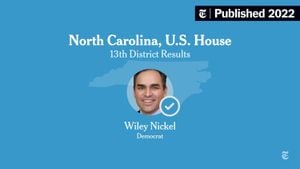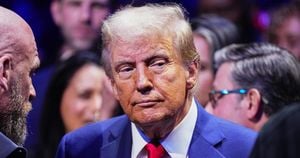Every October 31, millions of people don costumes, decorate their homes with spooky ornaments, and hand out candy to trick-or-treaters. Halloween, as we know it today, is the result of centuries of evolution, blending ancient traditions, cultural exchanges, and modern commercialism.
At its roots, Halloween can be traced back to Samhain, an ancient Celtic festival marking the end of the harvest season and the onset of winter. Traditionally celebrated from October 31 to November 1, Samhain was believed to be the time when the veil between the living and the dead was thinnest, allowing spirits to roam the earth. The Celts indulged in feasts, lit bonfires, and donned costumes to ward off unwelcome spirits. According to the Wall Street Journal, this festival is where many of the customs we associate with Halloween began to take shape.
Fast forward to the Middle Ages, Christian monks recorded the festival, intertwining it with Christian practices. For example, All Saints Day, celebrated on November 1, was introduced to honor saints and martyrs. The evening before this day, known as All Hallows’ Eve, was eventually shortened to Halloween. This shift helped to gradually reshape the holiday, melding pagan customs with Christian rituals.
Despite this blending, Halloween's essence remained intact. Traditions like carving turnips and offering food to spirits originated from Samhain. Initially, the Celts carved faces on turnips to frighten away spirits. When this tradition migrated to America, pumpkins took the place of turnips, leading to the Jack-o'-lanterns we know today.
The transformation of Halloween continued through the ages. From the early 1900s, Halloween became more community-oriented, involving parades and public festivities instead of private observances. This shift was partly driven by the desire to reduce vandalism and anti-social behavior. Towns started organizing events, solidifying the concept of Halloween as a time for community fun rather than fear.
By the 1950s, Halloween took on commercial significance. It became not just a day for community gatherings but also for businesses to capitalize on consumer spending. The rise of retail chains again changed the game. Costumes became mass-produced, and stores began marketing candy for trick-or-treating, turning the holiday from homemade traditions to mass consumerism. According to The New York Times, consumers are expected to spend $11.6 billion on Halloween celebrations this year, marking only the latest advancement of the holiday’s commercialized momentum.
Across the ocean, Halloween's influence reached Europe as well. Certain traditions, like guising—where children dress up and perform for treats—predate the American-style trick-or-treating. While guisers perform short skits or tell jokes in exchange for sweets, trick-or-treaters do so without any entertainment, reflecting the cultural adaptations across different societies.
While some people celebrate Halloween as harmless entertainment, others express concern about its pagan roots. Some members of religious groups, like Christians, argue against participation due to the holiday's historical links to witchcraft and the spirit world. Vlad Savchuk, evangelist and author, pointed out the need for believers to avoid Halloween as it can be deemed spiritually dangerous. He encourages Christians to focus on faith-based celebrations instead.
Critics, ranging from religious leaders to cultural purists, argue against the commercial excess and hollowing out of original meanings. They claim the genuine spirit of Halloween is lost amid consumerism and commercialization, which makes them long for the more simple, non-commercial celebrations of days gone by.
Through various adaptations, Halloween has evolved, and each cultural interpretation contributes to its modern identity. The festival continues to change as it absorbs new cultural elements, even as its early origins fade from view. Yet, no matter how it's celebrated, Halloween remains deeply rooted in our collective imagination, illustrative of the blend of ancient and modern practices.



